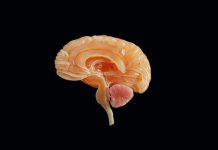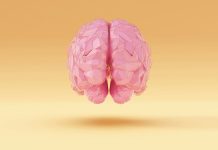
Alzheimer’s is often viewed as an old-age disease, as most diagnoses occur in people over 65. However, the disease doesn’t just pop up in the senior years.
It silently grows for many years before any symptoms appear.
Here’s how it works: Small proteins, named amyloid-beta peptides, gather together in the brain, forming sticky clumps called plaques. These plaques cause inflammation and finally kill off brain cells.
The big question is: what starts off these harmful changes? “We don’t have good tools yet that can help us detect Alzheimer’s early or predict how it will progress,” says Professor Erich Wanker, who leads a lab studying the biology of brain diseases at the Max Delbrück Center.
Wanker and his team are working hard to understand the ins and outs of Alzheimer’s. They are studying the brain’s proteome, the complex world of proteins involved in starting and driving the disease.
Writing in Genome Medicine, they reveal a new player in the Alzheimer’s story. This finding could help unravel the mysteries of Alzheimer’s and could lead to better ways of diagnosing the disease.
From Mouse Brains to Human Brains
To learn about the changes in the proteome, Wanker’s team uses genetically altered mice. These mice have five mutations found in people with a family history of Alzheimer’s.
The mice develop the same amyloid-beta plaques in their brains and show typical Alzheimer’s signs like memory loss.
A New Piece in the Alzheimer’s Puzzle
“While studying these mice, we found a protein called Arl8b building up in their brains, alongside the plaques,” says Annett Böddrich, the lead author of the paper.
The team also found piles of this protein in brain samples from people with Alzheimer’s.
Arl8b is connected to lysosomes, tiny compartments in cells that help break down protein clumps.
Interestingly, other researchers have found that in a certain worm species, boosting Arl8b can help break down plaques and protect nerve cells.
So, studying Arl8b could shed light on Alzheimer’s and potentially pave the way for new treatments.
A New Hope for Diagnosing Alzheimer’s
“We have found that people with Alzheimer’s have a lot more Arl8b in their cerebrospinal fluid than healthy people,” says Böddrich.
Since cerebrospinal fluid can be easily obtained for testing, Arl8b could potentially be a useful marker for diagnosing Alzheimer’s.
But before we get our hopes up, it’s important to note that this study was small. “It’s too soon to think we have a new test for Alzheimer’s,” says Wanker.
However, he remains positive: “Our work suggests that studying proteins can give us vital clues about disease processes and help us find markers for diseases.
And it’s not just Alzheimer’s — this could be true for other complex brain diseases like Parkinson’s and Huntington’s as well.”
If you care about brain health, please read studies about how the Mediterranean diet could protect your brain health, and Strawberries could help prevent Alzheimer’s disease.
For more information about brain health, please see recent studies that cranberries could help boost memory, and many older people have this non-Alzheimer’s dementia.
The study was published in Genome Medicine.
Follow us on Twitter for more articles about this topic.
Copyright © 2023 Knowridge Science Report. All rights reserved.



